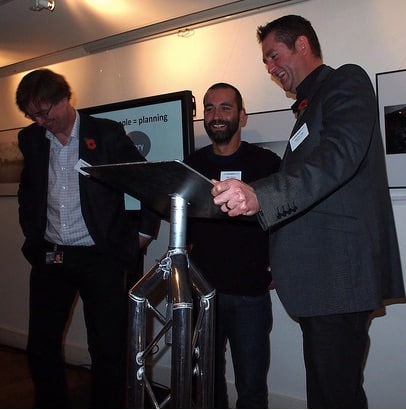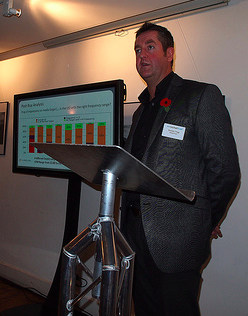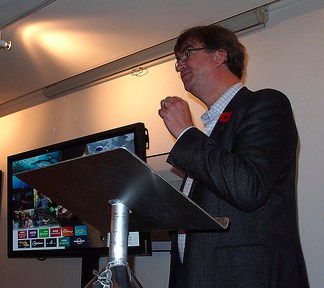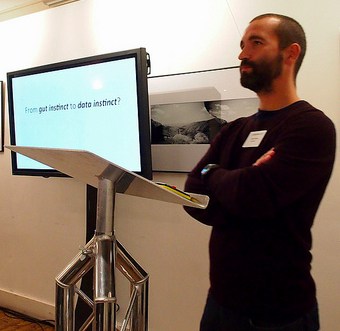I went to a breakfast debate hosted by Rocket Fuel UK (which has now been incorporated into Sizmek). For those unfamiliar, Rocket Fuel is a real-time ad targeting company whose technology combines all data-driven targeting techniques, from behavioural to contextual, into one system that automatically adapts campaigns in real time to get their clients most bang from their buck.
The debate was focused on the whether the most critical ingredient in effective brand advertising is environment or audience? Which has the greatest impact and traction, and should these tactics be combined or do they work better as separate strategies?

Marketers agree that getting the right message to the right audience at the right time is the holy grail of marketing. However, it does leave the question where budget is best allocated: Should the bulk of the advertising budget be kept in brand advertising within trusted and known content sites, or should this budget be reallocated to ‘the most precise audience you can reach,’ not necessarily engaged in reflective content.

The introduction was provided by Dominic Trigg, MD or Rocket Fuel UK who gave an overview of today’s discussion and introduced the speakers:
Tom Bowman, VP Strategy & Operations BBC Worldwide who’s presentation was entitled ‘Content is King’, and Pete Robins, Managing Partner of Agenda 21 talked on his subject entitled ‘Data is the New Oil’.
Dominic talked about the fact that digital advertising is no longer a secondary channel in the chief marketing officer’s arsenal. Once a bastion of simple banner flipping and annoying pop-up ads, display advertising is rapidly overtaking traditional media as the preferred channel to drive targeted awareness and the customer pipeline.
Yet with all the advancements in digital formats and devices, the dramatic shift to digital advertising is more likely a function of data—the explosion of anonymous online databases categorizing individual Web users based on their demographic attributes, surfing and purchase behaviour, and content preferences.
The demand for audience targeting has never been greater, and the demand for premium brand association has never waned. Getting the right message to the right audience at the right time is the holy grail of marketing. But it leaves the question, where to allocate your budget: should marketers keep the bulk of their advertising budget in brand advertising within trusted and known content sites, or should this budget be reallocated to ‘the most precise audience reachable,’ not necessarily engaged in reflective content.
This was demonstrated by a study carried out by Pubmatic in March this year with 644 advertisers and publishers – 2/3rds buyer and 1/3rd Publishers. This showed 97% using audience targeting this year), advertisers wanting the best of both audience targeting and premium brand association, and summed up by pointing out that publishers now have the ability to combine both in order to meet market demand and increase their yield from ads.
Trigg then pointed out:
• That in 2011, the available data volume is predicted to grow to 1.8 zettabytes (a trillion gigabytes).
• Data is crucial at Rocket Fuel, with the data warehouse having grown from five billion events to 30 billion events a year which takes 2 petabytes of storage
• Traditionally in advertising, content has been king, but significant impressions can be wasted.
• In the survey, asked if they could only pick one: “Right Content vs. Right Audience”, which one is more important, more than 70% of the respondents replied ‘audience’.
• The nature of data not only includes browsing behaviour, the referring url, site actions, etc, but can also track purchase intent, interests and psychographics, painting a rich portrait of the consumer, and reaching the consumer at the right time of day is crucial.

The next speaker was Tom Bowman, VP Strategy and Operations at BBC Worldwide. He pointed out:
• That advertising needs to shift from commercial messaging to consumer-led stories, augmented content, be innovative, engaging and fun.
• That the best definition of a brand is ‘the most valuable piece of real estate in the world – a corner of someone’s mind’.
• The voracious appetite for content, with for example, 48 hours of content being uploaded to YouTube every minute.
• But that the appetite for advertising is smaller, with Advertising Association tracking data showing how public favourability towards advertising has been in steady decline since the 1990s, but are far more welcoming of sponsorship and product placement.
• When it comes to reach – the dominant role is still played by broadcasters and (perhaps surprisingly) this has not changed in the age of new media.
• Despite huge growth of content, TV watching is up, and viewers stick with respected TV broadcasters for the vast bulk of their media consumption
• That the role of the aggregator has been extended – it now covers the curation of content, a badge of quality and shortcut for consumers seeking great content on any platform. This is particularly important for brands looking to secure acceptance and viewership of content across multiple media platforms.
• The social network numbers for broadcast TV brands are an indicator of the potential for brands to leverage broadcast relationships across other media. This example is Top Gear, which currently has over 11 million Facebook fans across two profile pages.
• Brand augmented content can wrap around authentic, premium content that comes with guaranteed audiences, create a layer of utility, entertainment and extra information built into brand engagement, and an enhanced experience for content consumers.
He concluded with a quote from John Hegarty: “Targeting specific audiences is a wonderful science but unless you include broadcast in some way within your marketing strategy you’ll be talking to an ever shrinking audience. And that’s not particularly good for the long term health of any company.”

The final speaker was Pete Robins, Managing Partner of Agenda 21 who spoke on the subject ‘From gut instinct to data instinct’.
Pete pointed out that serving effective ads is allowing exploration of content units in the form of ads or website hubs which means that data planning and exploiting technology becomes more crucial to get mass specificity.
And that a ‘mass of audiences’ is not a ‘mass audience’ – the message needs to be relevant to the individual given their scale and range.
He also pointed out:
• That more channels means more opportunities and therefore more need for media agencies to keep up to date… but that we’re waging a battle with increasing complexity.
• As digital becomes even more important to even more businesses even if you’re an agency, advertiser, media owner, audience aggregator, we’ll need stronger justification to support the inevitable growing share of market.
• It’s only going to get more complex too – we’re going to need ‘depots’ of data sources that are reliable and most importantly we have confidence in.
• He concluded that the rules of engagement should be that technologies within digital media channels are rapidly exposing weaknesses in communications strategies and that the key will be to establish ‘why’ an individual will be saying things rather than just ‘what’.
• Merging messaging with the right technologies which can increasingly take decisions based on swelling data sets should lead to be more specific across all digital touch points, and this will mean more relevancy – it means people will be able to opt in and opt out as they go, it ultimately gives them more choice and control.
Dominic Trigg concluded that it is not about using one tactic or another but it’s about understanding the usage and benefits of each and combining them to get the best results.



